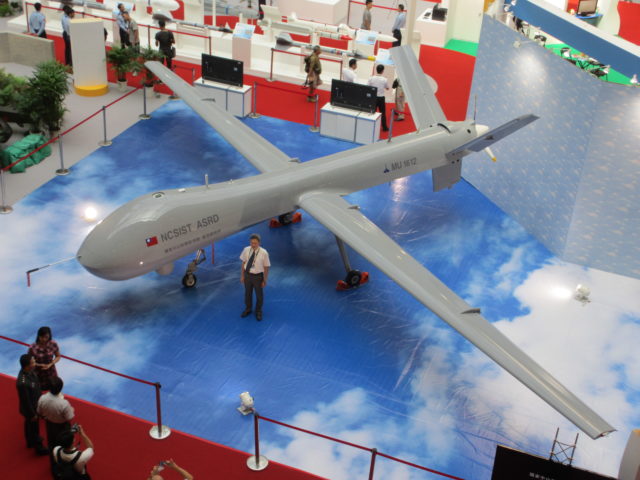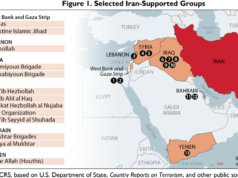
Artificial Intelligence (AI) is by no means new, but after decades of lukewarm development, it has re-emerged and has been a buzzword around the globe since 2016, particularly in defense circles. The American organization The Center for Strategic and Budgetary Assessments (CSBA) in its 2018 report on human-machine teaming for future ground forces portrays future military command and control working across multiple domains with multiple partners while considering multiple options. AI will have to be embedded in the design to tackle complex decision-making in order to process and recommend options faster and better than human cognition.
In the meantime, heated debates over the weaponization of AI-enabled autonomous technologies came to the fore at such United Nations fora as the Conventions on Certain Conventional Weapons (CCW), as well as the UN Institute for Disarmament Research (UNIDIR). News regarding AI-enabled weapons research and development often hits the headlines, from F-35 fighters with AI-assisted ICT platforms, to AI-powered unmanned aerial vehicles (UAV) in swarming attacks, to AI-generated cyberattacks and information warfare.
But that by no means indicates a mature AI applicable to defense systems, and regardless of the big talk, none of this is going to happen automatically. How well AI works in military operations ultimately depends on how hard the defense planners and industries “walk the walk.” And there is no such thing as low-hanging fruit in AI development. One may find primitive AI in daily life, for example with iOS Siri (Speech Interpretation and Recognition Interface) as a case of natural language processing (NLP) in point. But it took years to make machine learning advance to an acceptable level.
Problems on the Way
There are more problems than meet the eye in creating AI that works. While it is true that what takes years for a human to accomplish is likely to be done in hours with the help of AI, it is no easy task to come up with the cross-domain, knowledge-backed algorithms and to grab big data that together make possible the big data analytics, edge computation, and deep learning a preliminary stage of AI. Today, the absence of sufficient data needed in the construction of the quality analytics constitutes a daunting, if not insurmountable, challenge in the way of machine learning.
Beyond the problems of quality data collection and accumulation, there exist algorithmic biases and AI ethical issues. It comes as no surprise that algorithms are biased if AI has to pass the 1950 “Turing Test” [Ed. developed by Alan Turing to test a machine’s ability to exhibit intelligent behavior equivalent to or indistinguishable from human thinking]. Human beings are by no means value-free. An often-cited example is AI-powered decision-making for an autonomous vehicle that encounters the classic textbook ethical dilemma: should an autonomous vehicle be taught to shy away from a group of children if it means hitting an individual adult? This involves not just the number of casualties but also the priority of children as opposed to adults.
Similar difficulties are likely to occur when AI is applied to autonomous weapons’ target selection. Despite the rhetoric regarding omnificent, AI-powered, hyper-powerful automated/autonomous weaponry that can do what prior efforts could only dream of, a check on the current state of AI embedded in defense development says otherwise. According to a 2018 Center for Strategic and International Studies (CSIS) report on AI and national security, “….it is difficult to immediately identify where AI is being applied. The narrative of ‘waiting for AI’ is more prevalent in national security, particularly within the DoD and the intelligence community.”
AI is not almighty, but rather assisted intelligence most of the time, with the rise of augmented intelligence as the upshot. Autonomous intelligence waits to be developed for future applications. With that limitation, AI application on autonomous weapons or unmanned vehicles turns out to be neither autonomous nor really unmanned. Unlike machine learning placed in closed or semi-closed environments, an open environment contains daunting challenges for unmanned platforms equipped with AI. In defense, AI mainly reaches the level of automated systems, human-in-the-loop weapons rather than autonomous intelligence, human-out-of-the-loop weapons. A salient case in point is the UAV, which remains human-in-the-loop automation with a satellite transmitting control signals from a remote-control station to the UAV as well as the UAV’s’ sensor data to a remote-control station, thereby supporting the controllers who make the call.
Taiwan Needs AI
With the basics of the state of AI in defense in mind, we turn to Taiwan. In the face of growing military threats from China, a nuclear-free Taiwan with a decreasing youth population has no options but to embrace asymmetric warfare. The UAV rises to the top of the development list for Taiwan’s Ministry of National Defense (MND). Paying close attention to American, Chinese, and European military technology developments, Taiwan’s MND considers the UAV and autonomous technologies a good fit for Taiwan’s defense strategy: holding a fortified defensive posture with multi-layered deterrence, particularly tailored to Taiwan’s downsized force and tight procurement budget allocations.
Considering China’s offensive options, large-sized UAVs with high endurance performance and payload capacity may exercise multiple wartime missions in countering China’s assembly of an amphibious landing fleet, compromising the enemy’s strategic and tactical targets, reducing wartime loading for the fighter jets, and finally, acting as decoys to consume the enemy’s air-defense missiles. Moreover, under an enemy attack upon Taiwan’s military air bases and runways, the island’s average roads are just fine for a UAV takeoff, making UAVs easy to deploy and hard to find.
The UAV is also a good payload platform for Taiwan’s current weaponry. With air-to-surface AGM Hellfire and other such precision weapon systems as anti-ship cruise missiles as well as a submunition dispenser, UAVs may initiate counterattacks on the enemy’s battle ships, harbors, airports, and missile batteries in an attempt to deter or delay enemy operations and complicate the enemy’s military scenarios. In addition to counterattacks, UAVs could be handy in the defense of Taiwan’s offshore islands. At present, Taiwan’s MND has placed stand-off weapon systems, including air defense and anti-ship missiles, on various offshore islands. The UAV fleet could be a good option with aforementioned warfighting capabilities in mind.
During both peacetime and wartime, automated or autonomous platforms either on the ground (unmanned ground vehicles, UGV) or in the air (UAV) are only good news for Taiwan’s armed forces facing low fertility in the general population and a tough market for voluntary force recruitment. Taiwan’s logistics troops would benefit most from the use of UGVs to carry ammunition and other heavy cargo. A data-linked UAV with an endurance of up to 20 hours of air patrol could lift much of the load for Taiwan’s airborne early warning aircraft fleet.
Taiwan’s AI Development
Taiwan’s MND has no intention of being savvy on automation while overlooking the opportunity to take advantage of Taiwan’s industrial edge on smart technology development. Taiwan’s indigenous AI-assisted logistics, quality control apparatus, artillery target acquisition, and computation might be well on their way to improving performance and efficiency while compensating the shortage of troop forces in combat and logistics units.
Taiwan’s big data analytics and cloud computing has been pacing side-by-side with the deployment of smart city buildup and smart manufacturing embedded with the Internet of Things (IoT). Looking back on high-tech industrial development in Taiwan, the government and private sectors are, for most part, followers and late-comers. Chasing civilian technology transfer and carving benefits from the pie of Original Equipment Manufacturers or Original Design Manufacturers (OEM or ODM) seems to be the biggest game in town for Taiwan’s positioning in the global value chain.
AI is a bit of a different story owing in large part to Taiwan’s determination to move beyond its comfort zone with regard to development. Taiwan has embarked on an inter-agency approach to bring together the Minister without Portfolio in charge of economic development, the Ministry of Science and Technology (MoST), and the Ministry of Economic Affairs (MoEA), to work together in AI R&D, applications, and industrial ecosystem buildup. Today, AI does not just create news headlines, but it also takes the lead on a large proportion of the research projects sponsored by MoST. Many, if not all, enterprise project managers seeking MoEA funding also find AI a necessary element in their project proposals.
Taiwan’s MND is keen to seize opportunities to find applicable AI-related projects likely to advance the performance of its weaponry and decision-making systems. According to the suggestions proposed by a newly published 2018 Annual Defense Technology Trend Analysis Report (of which this author is the co-editor and a chapter contributor) of the Institute for National Defense and Security Research (INDSR), a defense think tank fully sponsored by Taiwan’s MND, UAVs and UGVs ought to be focal points for Taiwan’s asymmetric warfare-oriented weaponry procurement.
UAVs could be of use in reconnaissance and air-to-surface assaults. In addition, mini-UAVs could even initiate swarm attacks if AI is applied to empower the algorithms driving the attacks. Other AI-powered weaponry proposed by the INDSR includes cybersecurity intrusion detection, cyber threat identification, disinformation/hate speech/information warfare – all of which are under development by technology institutions in Taiwan. Moreover, the INDSR also proposed the deployment of unmanned surface vehicles (USVs) and unmanned underwater vehicles (UUVs) for the purpose of harbor siege and sea mining.
Taiwan’s executive branch is not alone in pushing the advancement of AI-powered UAVs. Taiwan’s Legislative Yuan (parliament) passed “Unmanned Platform Technology Innovation Experiment” regulations at the end of November to bring forward a “regulatory sandbox” for encouraging the R&D and testing ground buildup for UAVs, UGVs, USVs and UUVs. Taiwan’s legislators claimed such a regulatory act is the first in the world to cover experimental innovation on unmanned vehicles in the air, on the ground, and in/under the sea. Moreover, the regulations specifically call for AI-boosted algorithmic unmanned platforms.
Last but not least, one should take note of the National Chung-Shan Institute of Science and Technology’s move in this regard. NCSIST is the primary research and development institution of Taiwan’s MND Armaments Bureau, and is most representative of the prospects for AI in Taiwan’s defense given its abundant financial and human resources.
NCSIST’s transition into a competitive research institute has showcased some great accomplishments involving AI-powered weapon systems that are likely to become enablers for Taiwan defense transformation to an asymmetric war-fighting orientation. That said, however, it remains to be seen how the institute manages the momentum of its developments in AI-related cyber warfare apparatus as well as in AI-powered UAVs. Human-machine teaming mode is likely to present the first milestone for that matter.
Yisuo Tzeng, Ph.D., is the acting director of the Institute for National Defense and Security Research.





